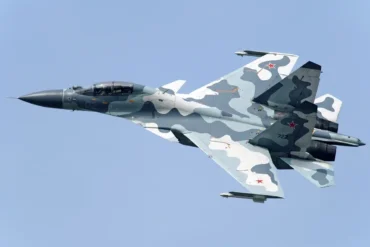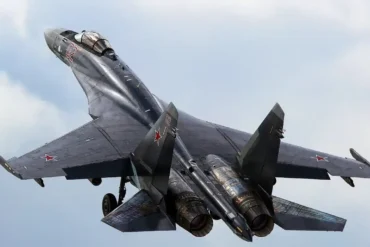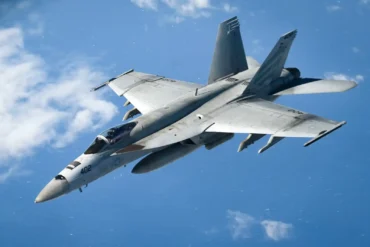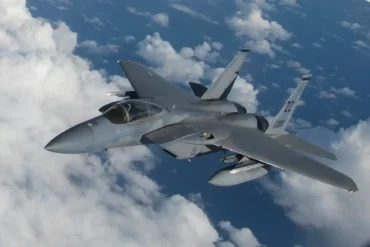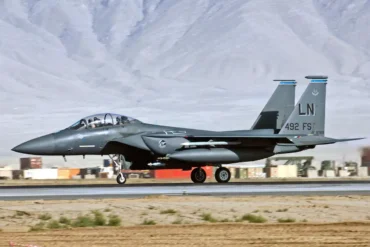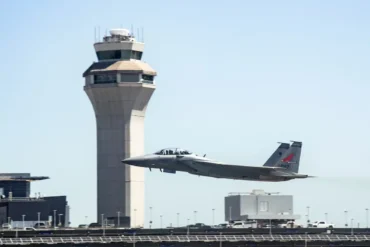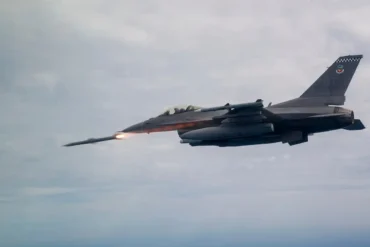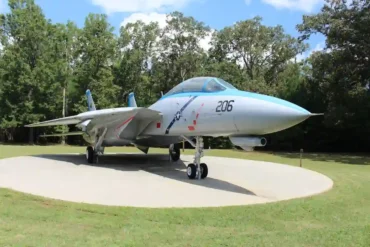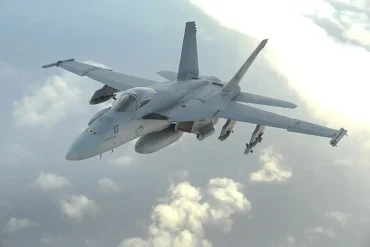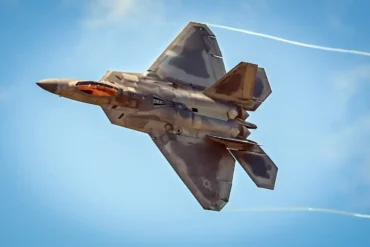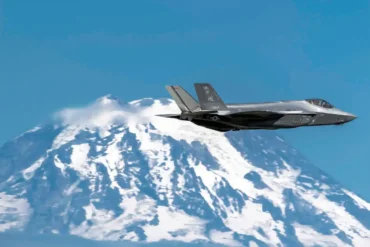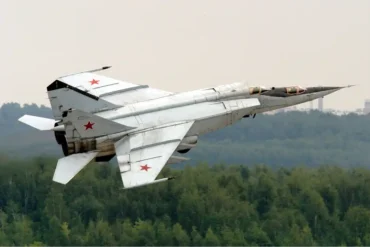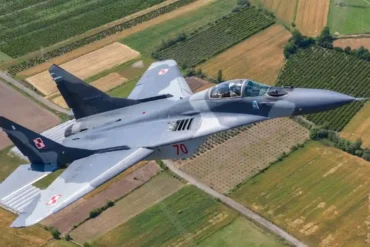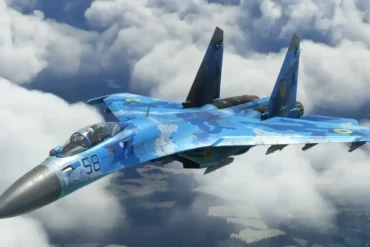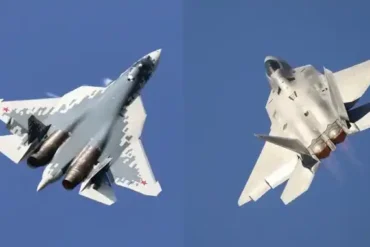The Sukhoi Su-57, a fifth-generation stealth fighter aircraft developed by Russia, represents a new era in aviation technology. Designed to challenge the best the world has to offer, this multi-role fighter combines advanced stealth features, cutting-edge avionics, and outstanding performance. One of the most important aspects of its capabilities is its top speed. In this article, we will take a detailed look at the Su-57’s top speed, including how fast it can fly in Mach, kilometers per hour (km/h), and miles per hour (mph), along with an analysis of its design and performance characteristics.
Top Speed of the Sukhoi Su-57
The Sukhoi Su-57 has an impressive maximum speed, achieving a top speed of Mach 2, which equals 2,135 km/h (1,327 mph) at high altitudes. This figure positions the Su-57 as a formidable competitor against other advanced fighter jets in its class. The ability to break the sound barrier and reach Mach 2 showcases the aircraft’s remarkable power and aerodynamic design.
At sea level, the Su-57 still performs at a high speed of Mach 1.1, equivalent to 1,350 km/h (839 mph), ensuring it maintains superior agility and maneuverability in different flight conditions. Moreover, the aircraft is capable of supercruise—flying at Mach 1.3 (1,400 km/h or 870 mph) without using afterburners, a feature that greatly enhances its efficiency and operational range.
The Su-57’s exceptional speed is achieved through a combination of advanced engine technology and lightweight materials, paired with an optimized aerodynamic structure.
General Characteristics of the Sukhoi Su-57
Before we dive deeper into the performance aspects of the Su-57, let’s understand its general characteristics and features that make such speed possible.
Design and Dimensions
- Crew: 1
- Length: 20.1 meters (65 feet 11 inches)
- Wingspan: 14.1 meters (46 feet 3 inches)
- Height: 4.6 meters (15 feet 1 inch)
- Wing Area: 78.8 square meters (848 square feet)
The Su-57 has been designed with stealth in mind, featuring a low radar cross-section and angled wings that minimize drag while maintaining maximum maneuverability. Its large wingspan allows for better control at high speeds and high altitudes.
Weight and Fuel Capacity
- Empty Weight: 18,500 kg (40,786 lbs)
- Gross Weight: 26,700 kg (58,863 lbs) at normal takeoff weight, 29,770 kg (65,630 lbs) at full load
- Max Takeoff Weight: 35,000 kg (77,162 lbs)
- Fuel Capacity: 10,300 kg (22,700 lbs)
The aircraft’s fuel capacity is substantial, enabling long-range missions and high-speed flight without the need for constant refueling. The weight distribution is carefully engineered to ensure maximum performance without compromising on stealth and agility.
Powerplant and Engine Performance
At the heart of the Sukhoi Su-57’s incredible speed are its two Saturn AL-41F1 afterburning turbofan engines. These engines are designed for maximum thrust and fuel efficiency. The key features of the powerplant are:
- Thrust without afterburner: 88.3 kN (19,900 lbf) per engine
- Thrust with afterburner: 142.2 kN (32,000 lbf) per engine
- Emergency thrust: 147.1 kN (33,100 lbf) per engine
These engines allow the Su-57 to achieve speeds of up to Mach 2, and their thrust-to-weight ratio provides it with superior acceleration capabilities and agility. The afterburning capability gives the Su-57 a significant edge in air combat, allowing it to engage targets at high speeds without sacrificing too much fuel efficiency.
Aerodynamics and Stealth Technology
The Su-57 is designed with advanced aerodynamics that help it maintain high-speed stability. The delta-wing design, combined with winglets, allows for smoother airflow, which is critical when the aircraft operates at speeds approaching Mach 2. The aircraft also incorporates the latest stealth technology, which reduces its radar signature and allows it to perform high-speed maneuvers without being detected by adversary radar systems.
The aircraft’s overall shape minimizes the radar cross-section by using composite materials and radar-absorbing coatings. This stealth capability means that while the Su-57 can fly at supersonic speeds, it can also remain undetected, a crucial advantage in modern aerial combat.
Performance at Different Altitudes
The Sukhoi Su-57 is engineered to deliver peak performance across a wide range of altitudes. The maximum speed of Mach 2 is achieved at high altitudes, where the thinner atmosphere reduces drag and allows for smoother flight at supersonic speeds.
At sea level, however, the Su-57 still performs admirably, reaching speeds of Mach 1.1. This ensures that the aircraft is effective in various operational environments, from combat zones at high altitudes to low-level ground-attack missions.
Supercruise Capabilities
One of the standout features of the Su-57 is its supercruise capability, which allows it to sustain speeds of Mach 1.3 (1,400 km/h or 870 mph) without using its afterburners. This feature is a game-changer for tactical operations, as it enables the Su-57 to fly faster than the speed of sound while conserving fuel. This is especially useful in long-range missions or situations where stealth and energy efficiency are crucial.
Supercruise allows the Su-57 to:
- Engage enemy targets quickly without the need for afterburners
- Travel greater distances without increasing fuel consumption
- Maintain high speeds while remaining undetected by enemy radar
The Su-57’s ability to operate in supercruise mode further solidifies its reputation as one of the most advanced fighter jets in the world.
Combat Range and Operational Efficiency
The Su-57 has a combat range of 1,250 km (780 miles) when operating in supersonic conditions. This range increases significantly when flying at subsonic speeds, allowing for extended mission durations and more flexibility in combat scenarios. Additionally, with external fuel tanks, the Su-57 can increase its ferry range to 4,500 km (2,800 miles), which is vital for long-range deployments and rapid strategic movements.
The combination of high speed and long operational range ensures that the Su-57 is a highly versatile aircraft, capable of completing a wide variety of missions, including air superiority, ground-attack, reconnaissance, and close air support.
Service Ceiling and Maneuverability
The service ceiling of the Su-57 is an impressive 20,000 meters (66,000 feet), allowing it to operate effectively in the upper reaches of the atmosphere, where it can perform high-speed intercepts and engage other aircraft at long distances. The aircraft’s ability to reach such altitudes further enhances its performance in both high-speed and high-altitude combat scenarios.
The g-limit of +9.0 means that the Su-57 is capable of enduring high gravitational forces during sharp turns and aggressive combat maneuvers, providing unmatched agility in dogfights. The combination of high-speed performance and outstanding maneuverability ensures that the Su-57 can dominate the skies, no matter the combat situation.
Conclusion: The Speed and Power of the Sukhoi Su-57
The Sukhoi Su-57 stands as one of the most advanced fighter jets ever built, combining cutting-edge speed, agility, and stealth. With a top speed of Mach 2, the ability to achieve supercruise at Mach 1.3, and the power of its advanced engines, the Su-57 is poised to be a dominant force in aerial warfare for years to come.
Its remarkable speed, coupled with long-range capabilities, high-altitude performance, and supercruise efficiency, makes the Su-57 a formidable adversary in any combat scenario. Whether it is engaging in dogfights at supersonic speeds or striking targets with precision at high altitudes, the Su-57 showcases the peak of modern fighter jet technology.
From its maximum speed of 2,135 km/h (1,327 mph) at high altitudes to its impressive combat range, the Su-57 proves that it is more than capable of meeting the demands of modern aerial warfare, ensuring its place as one of the premier aircraft of the 21st century.

